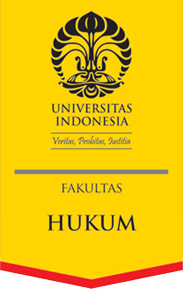DOI
10.21143/jhp.vol55.no.1.1738
Abstract
Metode original intent lazimnya menghasilkan penafsiran yang bersifat rigid sesuai niat perumusnya. Selama konstitusi tidak diubah, maka tafsiran original intent pun tidak berubah. Namun penggunaan metode penafsiran original intent di Indonesia dapat menghasilkan pemaknaan yang berbeda/berubah meskipun ketentuan konstitusi dan perumusnya tidak berganti. Hal ini terjadi karena terdapat perkembangan pemikiran dalam penerapan metode penafsiran original intent. Penelitian ini membahas mengenai perkembangan pemikiran tersebut dan menganalisa pola penerapan metode original intent dalam penafsiran konstitusi yang dilakukan oleh Mahkamah Konstitusi di Indonesia. Ini merupakan penelitian doktriner dengan pendekatan konsep dan kasus. Hasil penelitian menunjukkan bahwa terdapat perkembangan pemikiran dalam penerapan metode penafsiran original intent dari yang berorientasi rigid hingga ke moderat. Mahkamah cenderung menerapkan penafsiran original intent pada: (1) mekanisme pengisian lembaga/pejabat negara; (2) kewenangan lembaga negara; dan (3) hak asasi manusia. Pola penerapan dapat dilihat dari perspektif cara penggunaan sumber yang berbeda dan tujuan penggunaan metode ini untuk mengungkap baik makna ‘tersurat’ maupun ‘tersirat’.
Bahasa Abstract
An original intent is an approach to interpreting the Constitution that seeks to reveal the meaning according to the intent of the drafters. In practice, this method contains problems, the interpretation by the Constitutional Court produces different meanings and develops even though it is based on the same method. it is necessary to carry out an analysis of the development of thought in the application of the original intent method as well as an analysis of the pattern application of the original intent in the constitutional interpretation in Indonesia. This is normative/doctrinal research. The results of the study indicate that there is a development of thought in the application of the original intent method which is oriented towards being rigid and moderate. The Court tends to apply the original intent to (1) the mechanism for filing state institutions/officials; (2) the authority of state institutions; and (3) human rights.
References
Artikel jurnal
Kavanagh, Aileen. “Original Intention, Enacted Text, and Constitutional Interpretation.” The American Journal of Jurisprudence 47, no. June 11 (2015). http://ajj.oxfordjournals.org/.
McAffee, Thomas B. "Constitutional Interpretation-The Uses and Limitations of Original Intent." U. Dayton L. Rev. 12 (1986): 275.
Powell, H. Jefferson. "The original understanding of original intent." Harvad Law Review, 98, No. 5, (1984).
Buku
Asshiddiqie, Jimly. Teori Dan Aliran Penafsiran Hukum Tata Negara. Jakarta: Ind.Hill Co, 1997.
Balkin, Jack M. Living Originalism. London: The Belknap Press, 2011.
Barak, Aharon. Purposive Interpretation In Law. United State of America: Princeton University Press, 2005.
Bobbit, Philip. “Constitutional Law and Interpretation.” In A Companion to Philosophy of Law and Legal Theory, edited by Dennis Patterson, Second. Malden: Wiley Blackwell, 2010.
Cross, Frank B. The Failed Promise of Originalism. California: Stanford University Press, 2013.
Golford, Dennis J. The American Constitution and The Debate Over Originalism. New York: Cambridge University Press, 2005.
Hermawan, Muhammad Ilham. Teori Penafsiran Konstitusi: Implikasi Pengujian Konstitusional Di Mahkamah Konstitusi. Jakarta: Kencana, 2020.
Whittington, Keith E. Constitutional Interpretation: Textual Meaning, Original Intent, and Judicial Review. Lawrence: University Press of Kansas, 1999.
Kelsen, Hans. Pure Theory of Law. Berkeley and Los Angeles: University California Press, 1967.
Kirk, Russel. The Conservative Constitution. Washington DC: Regnery Gateway, 1990.
Mcginnis, John O. Originalism and the Good Constitution. London: Harvard University Press, 2013.
Milton, Edwin. The Historical Present: Uses and Abuses of The Past. Jackson: University Press of Mississippi, 1997.
Strauss, David A. The Living Constitution. Edited by Geoffrey R Stone. United State of America: Oxford University Press, 2010.
Bobbit, Philip. “Constitutional Law and Interpretation,” in A Companion to Philosophy of Law and Legal Theory, ed. Dennis Patterson, Second (Malden: Wiley Blackwell, 2010).
Dokumen/Putusan
Konstitusi, Mahkamah. “Putusan Mahkamah Konstitusi,” n.d. https://www.mkri.id/index.php? page=web.Putusan&id=1&kat=1&menu=5&jenis=PUU&jnsperkara=1.
———. Putusan Mahkamah Konstitusi Nomor 005/PUU-IV/2006 (2006).
———. Putusan Mahkamah Konstitusi Nomor 072-073/PUU-II/2004 (2004).
———. Putusan Mahkamah Konstitusi Nomor 1-2/PUU-XII/2014 (2014).
———. Putusan Mahkamah Konstitusi Nomor 10/PUU-VI/2008 (2008).
———. Putusan Mahkamah Konstitusi Nomor 14/PUU-XI/2013 (2013).
———. Putusan Mahkamah Konstitusi Nomor 2-3/PUU-V/2007 (2007).
———. Putusan Mahkamah Konstitusi Nomor 3/PUU-XVII/2019 (2019).
———. Putusan Mahkamah Konstitusi Nomor 30/PUU-XVI/2018 (2018).
———. Putusan Mahkamah Konstitusi Nomor 35/PUU-XX/2022 (2022).
———. Putusan Mahkamah Konstitusi Nomor 85/PUU-XX/2022 (2022).
———. Putusan Mahkamah Konstitusi Nomor 36/PUU-XVII/2019 (2019).
———. Putusan Mahkamah Konstitusi Nomor 51-52-59/PUU-VI/2008 (2008).
———. Putusan Mahkamah Konstitusi Nomor 55/PUU-XVII/2019 (2019).
———. Putusan Mahkamah Konstitusi Nomor 56/PUU-VI/2008 (2008).
———. Putusan Mahkamah Konstitusi Nomor 92/PUU-X/2012 (2012).
———. Putusan Mahkamah Konstitusi Nomor 97/PUU-XI/2013 (2013).
Recommended Citation
Khoiri, Muhammad Alwi Ramdani; Harijanto, Susi Dwi; and Sungkar, Lailani
(2025)
"ORIENTASI RIGID DAN MODERAT DALAM PENAFSIRAN ORIGINAL INTENT DAN PRAKTIKNYA DI INDONESIA,"
Jurnal Hukum & Pembangunan: Vol. 55:
No.
1, Article 6.
DOI: 10.21143/jhp.vol55.no.1.1738
Available at:
https://scholarhub.ui.ac.id/jhp/vol55/iss1/6
Included in
Administrative Law Commons, Agriculture Law Commons, Air and Space Law Commons, Antitrust and Trade Regulation Commons, Business Organizations Law Commons, Civil Law Commons, Comparative and Foreign Law Commons, Conflict of Laws Commons, Constitutional Law Commons, Courts Commons, Criminal Law Commons, Criminal Procedure Commons, Election Law Commons, Energy and Utilities Law Commons, Human Rights Law Commons, International Trade Law Commons, Internet Law Commons, Legal Education Commons, Natural Resources Law Commons, Rule of Law Commons

